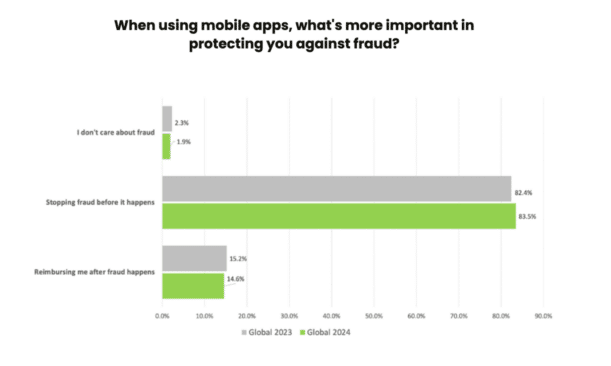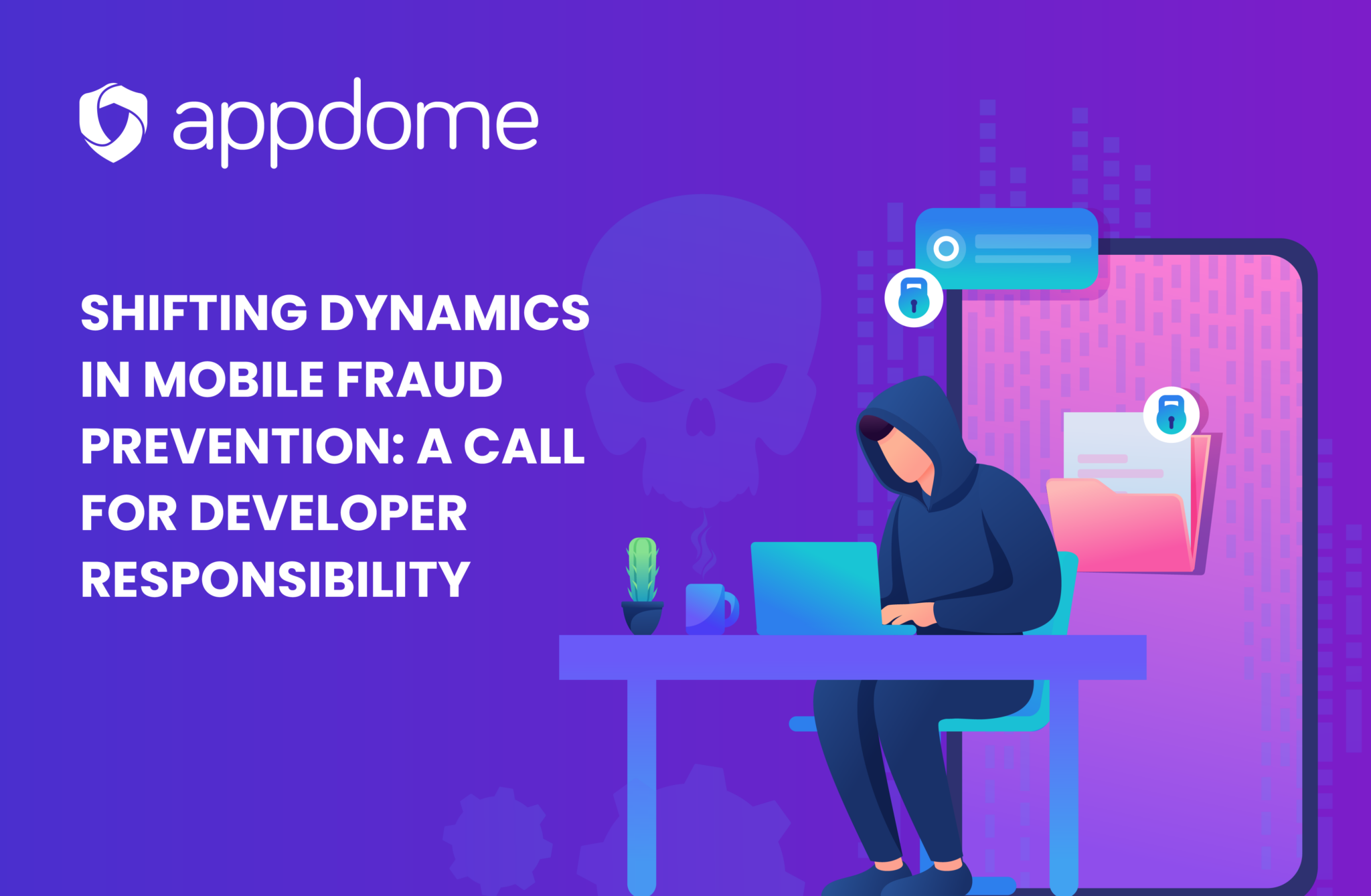In an era dominated by mobile technology, the convenience of smartphones and mobile apps comes hand in hand with the rising threat of mobile fraud. As the sophistication of cyber threats continues to evolve, mobile users find themselves increasingly powerless to defend against these complex attacks. The landscape of mobile security and anti-fraud protection is undergoing a transformative shift, with the burden now falling on mobile developers to integrate robust in-app protections. Let’s explore some of the key dynamics at play in the world of online fraud to understand how attackers are shifting their strategies toward mobile-specific attack vectors in their fraud operations.
Phishing Attacks and Overlay Malware
Phishing has been a long-standing attack method for decades, evolving into increasingly sophisticated variants over time. Among these, newer threats such as vishing (voice phishing) and smishing (SMS phishing) have emerged as top concerns. Many vishing attacks today are further enhanced by artificial intelligence, making them more convincing and difficult to detect. In a phishing attack, the victim is lured into interacting with fake or malicious content that mimics a trusted entity—such as receiving a message from a bank asking to verify an account by providing a social security number. The victim believes they are sending sensitive information to their bank, but it actually goes to a cybercriminal.
While email has traditionally been a common channel for phishing campaigns, modern phishing attacks have expanded beyond email to exploit other avenues, particularly mobile applications. Today’s attackers employ advanced techniques, including overlay malware, accessibility service malware, fake apps and clones, and trojans with obfuscated or encrypted payloads. These sophisticated methods are designed to deceive users, often through malicious overlays that closely mimic legitimate apps, tricking them into entering login credentials, financial details, or performing harmful actions inadvertently. As phishing continues to evolve, bolstered by AI and other technologies, it remains a pervasive and dangerous threat in the cybersecurity landscape.
Synthetic Fraud
Synthetic fraud involves creating fictional identities or fake events, transactions, or accounts by combining real and fabricated information, or modifying signals to or from a seemingly legitimate endpoint such as a mobile application. As individuals increasingly rely on their smartphones for online banking, shopping, and other sensitive transactions, attackers find the mobile channel to be a rich source of valuable personal information, such as usernames, passwords, and financial details. And attackers realize that it’s relatively easy to gain access to or modify elements of a mobile application to simulate real transactions, and also conceal their efforts at the same time. Attackers often use sophisticated concealment methods going undetected until the fraudulent activity is well underway and they also leverage a plethora of powerful tools and hacking frameworks to achieve their outcomes, such as custom Frida scripts, Magisk/Zygisk, and even ADB to conduct code injection, keystroke injection other methods to fabricate information to conduct fraud.
Mobile Malware & Spyware
Mobile malware and spyware can be discreetly installed on a user’s device through malicious apps or compromised websites, or through backdoors secretly planted, which often abuse legitimate app functionalities (like Android Debug mode, Developer Options, or Allow Unknown Sources). Attackers use keyloggers, malicious keyboards, or even active techniques such as key injection or shell code injection to deliver malware into target apps, which then aim to steal sensitive information, track user activities, or even take control of the device.
Credential Stuffing, Account Takeovers (ATOs), and Malicious Bots
Cybercriminals utilize automated bots for credential stuffing attacks, where previously stolen login credentials are used to gain unauthorized access to multiple accounts. The goal of most credential stuffing attacks is Account takeovers (ATOs) involve malicious actors gaining control of a user’s account, or access to backend systems where they can compromise many accounts simultaneously. These types of high-scale automated attacks often leverage blended attacks which combine multiple attack vectors (for example reverse engineering the legitimate mobile app to understand the inner workings of the login flow, and then they use emulators or other virtualization methods to conduct brute-force login requests against backend APIs using stolen credentials). Such techniques make it extremely challenging for traditional security or anti-fraud solutions to detect or prevent.
Fake Apps, Clones, Trojans
One prevalent cybersecurity threat involves the proliferation of fake apps and the perpetration of App Store fraud. Cybercriminals engage in the creation of counterfeit applications that mimic well-known and trusted services, aiming to mislead users into downloading and utilizing them. These deceptive apps pose a dual threat: they may either harbor malicious software designed to compromise the security of users’ devices or function as conduits for the unauthorized collection of sensitive information.
These fraudulent apps often closely resemble legitimate ones, making it challenging for users to discern the difference. Once installed, they can unleash malware that may lead to various detrimental consequences, such as unauthorized access to personal data, financial information theft, or the compromise of device functionality. Additionally, these fake apps may exploit users by coercing them to provide sensitive details under false pretenses.
Consumers Want Fraud and Malware Prevention, Not Reimbursement
In Appdome’s 2024 Global Consumer Survey, mobile fraud is a top concern for consumers. With AI-based scams on the rise, 58% of global consumers named mobile fraud their #1 concern, the highest ever. As a result, mobile fraud prevention has become a fundamental requirement in mobile apps. In fact, there has been a resounding message 85.5% of worldwide consumers that they prefer anti-fraud solutions that prevent fraud rather than those that reimburse them after the fraud occurs. Merely 15.2% indicated a preference for reimbursement after fraud incidents, while a negligible 2.3% expressed indifference towards fraud protection.

The Shifting Responsibility: A Call to Developers
In light of the ever-evolving mobile threat landscape, mobile consumers find themselves in a precarious position, grappling with the sophisticated nature of modern cyber-attacks. Recognizing this reality, government agencies, including the U.S. federal government, have acknowledged a crucial shift in responsibility. The Kamala Harris and Joe Biden cybersecurity strategy underscores the need for developers to take a proactive role in securing their mobile applications.
As mobile users increasingly rely on developers to fortify their apps against emerging threats, the industry must prioritize in-app protections. Government initiatives echo the sentiment that safeguarding users from mobile fraud and malware is not solely the responsibility of individuals. Rather, developers must integrate robust security measures to create a resilient defense against the intricacies of modern cyber threats.
In conclusion, as mobile technology advances, so must our approach to security. Users are not defenseless, but the burden of protection should rightfully shift towards the developers who craft the digital experiences we rely on. By embracing this paradigm shift, the mobile industry can foster a more secure environment, ensuring users can trust in the safety of their digital interactions.
Want to learn more about how to prevent mobile fraud using Appdome’s no-code unified mobile app defense platform? Click the button below to get a free 20-minute demo.
Request a Demo






